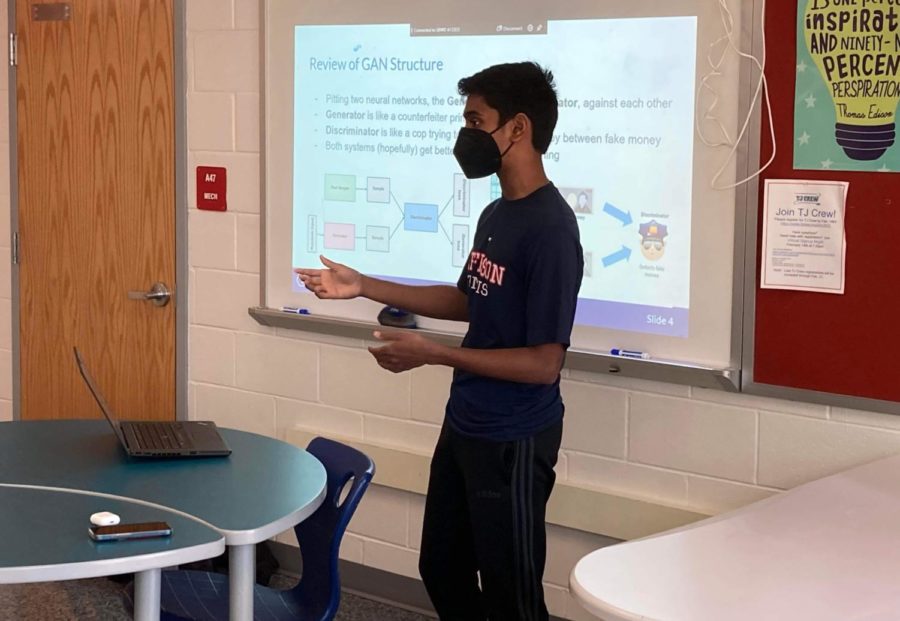Machine Learning Club partners with universities for internship opportunities
During 8th period, Machine Learning Club captain and senior Sauman Das lectures on generative adversarial networks, a model used in machine learning. “We’re trying to teach more application based machine learning and how to get started with research,” Das said. “We’re also making sure we’re talking about current advances in machine learning, like AlphaFold.”
March 6, 2023
Jefferson’s Machine Learning Club is partnering with universities to provide internship opportunities for students. Currently, the club is working with Dr. Haris Sair at Johns Hopkins University and Dr. Paul Yi at the University of Maryland.
“We’re able to have this separate pipeline, so our students don’t have to go through the traditional application process that other students may go through,” Machine Learning Club captain and senior Sauman Das said.
To select and prepare students for these internship opportunities, the club ran a competition where members applied their machine learning skills to a real-world problem.
“In the advanced group, we have a competition to detect breast cancer using machine learning,” Das said. “The partnerships connect students who do well in this competition with the opportunity to work in a professional setting.”
The competition ran from early December to late February, giving participants ample time to develop and improve their algorithms.
“Something we’re trying to emphasize in this competition is experimenting with different strategies and seeing why certain strategies do better than others and embracing failure,” Machine Learning Club captain and senior Arnav Jain said.
Along with helping students explore new machine learning methods, the competition focused on effectively communicating these techniques.
“In the competition, the goal is not to see who can get the highest number. When we were talking to Dr. Sair, he said he wants to see the methods [students] used to model the data and an actual presentation from them,” Das said.
Due to the club’s history of accomplishments and research projects, it has developed a strong reputation, even among universities.
“On our website, we have a list of research papers that our students have written and done well with in competitions, such as the [International Science and Engineering Fair] or conferences, which probably seems pretty impressive,” Jain said.
As a result, the club received enthusiastic responses about potential internship opportunities after reaching out to college professors.
“The [professors] actually expressed interest first and said they would be willing to take students in as interns,” Das said. “Some of the mentors, like at Johns Hopkins, had already heard of our club.”
For students looking to obtain a machine learning internship in the future, Das emphasizes building a strong foundation and thoroughly understanding algorithms.
“There are a lot of libraries that make machine learning really easy to do,” Das said. “You could write about three lines of code and have a model, but try to make sure that you’re learning the theory and math behind machine learning when starting off.”






